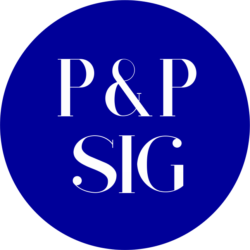Proceedings-2000: By Tricia Cunat and Amary Craig; Summary by Maria Christophel (2006)
This article describes the method for writing processes and procedures using as the base a detailed analysis of the audience and the ISO 9000 definition of process vs. procedure. It provides a detailed definition and a comparison between processes and procedures, and provides examples of when using either or both is appropriate. It defines audiences and provides a model matrix for identifying potential audiences in the development of a user manual. In addition, it presents types of formats for delivering processes and procedures to the audience.
Web Delivery of Corporate Policies and Procedures
Proceedings-2001-Jeannete P. Evans; Summary by Maria Christophel (2006)
This article outlines the advantages and disadvantages of delivering policies and procedures through the web. It presents the results of surveys conducted in a company to decide on the selection of the best delivery method to alleviate the old problem of maintaining policies and procedures binders updated. The author presents in a series of tables, the conclusions of research activities, advantages/disadvantages of online delivery, and the results of implementing web delivery.
Transition To Process-Based Policies and Procedures
Proceedings-1997; By Jerri L. Huclayer; Summary by Maria Christophel (2006)
This article describes the old format for writing P&P and indicates the reasons why this format is becoming obsolete. It describes process-based policies as the new format of writing and points out the benefits of using such method. It explains that the new format places more importance on the process rather than who is doing the process.
The Technical Writing Machine- A Model for Teaching Writers How to Develop Troubleshooting Procedures
Proceedings-1997; By Thomas F. Moran; Summary by Maria Christophel (2006)
This article presents The Technical Writing Machine as a model for teaching students to develop troubleshooting procedures. It indicates the reasons for creating the model and the benefits derived by its use. It presents a diagram of the model and explains the flow and its different components. The application of the model produces malfunctions systems for which strategies for problem solving must be written.
Procedures Writing Training in a Corporate Environment
Proceedings-1993; Elizabeth T. Perelli; Summary by Maria Christophel (2006)
This article narrates the activities this author performed with one additional staff to implement a procedures writing training program in a financial company. The article describes the assumptions of the program, the challenges encountered during the process, and the benefits received by all participants in the program.
Placing Policies and Procedures Online – A Practice Approach
Proceedings-1997; By Ronald Robert Kirtland; Summary by Maria Christophel (2006)
The article introduces in br /ief, the lessons learned during the enormous task of updating and converting hard copy documentation to an online environment. It provides a br /ief insight into the phases of the project: analysis, research, development, user testing, and implementation.
Pictures for Procedures
Proceedings-1999; By Robert Krull; Summary by Maria Christophel (2006)
This article introduces a method for achieving balance between the people’s mental representation of actions and the display plane in which the action is represented. It explains the components of actions as procedures that brain must conform with, and provides detailed information on the performer and the spectator’s point of view as pictured on the display plane.
Improving Medical Treatment Procedures
Proceedings-1996; Judy M. Gibbs; Summary by Maria Christophel (2006)
This article provides information on the implementation of writing techniques used in a technical field to improve the documentation of procedures of another. The author describes the scenario, narrates the status of the current procedures, and names the protocols needed to enhance the document. The article provides clear examples for enhancing the protocols, summarizes the positive results of implementing the recommended protocol enhancements, and provides a sample of the complete template.
Estimating Time and Cost for Policies and Procedures Projects
Proceedings-2003; By Adrienne Escoe; Summary by Maria Christophel (2006)
This article provides guidelines for estimating the cost of developing policies and procedures for a company. It points some of the misconceptions of scope and responsibilities between the client and the technical writer that eventually surface with financial downturns. It recommends the use of a checklist and a detailed list of items that should be included in it. It guides through the main items of scoping the project, and enumerates the tasks that should be considered, time, level, etc. The author recommends the careful preparation of a list of assumptions and the consequences of the violation of such assumptions.
Designing Policies & Procedures Information
Proceedings-2000; By Raymond Urgo; Summary by Maria Christophel (2006)
This article discusses the five levels of concern that documentation developers should address when preparing the design of policies and procedures. Level 1: Defines P&P Architecture, and addresses the need to either use/recreate existing architecture or create a new. Level 1: Compares the united or disunited relationship between the P&P documents to be developed. Level 3: presents the extrinsic and the intrinsic approaches for development the content and the effects of combining them. Level 4: describes the Prose-based and the Structured methods for writing and the uses of both. Level 5: refers to individual units and collective units as techniques for communicating the information.
